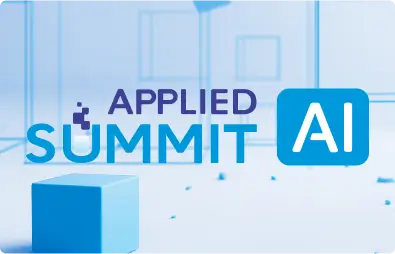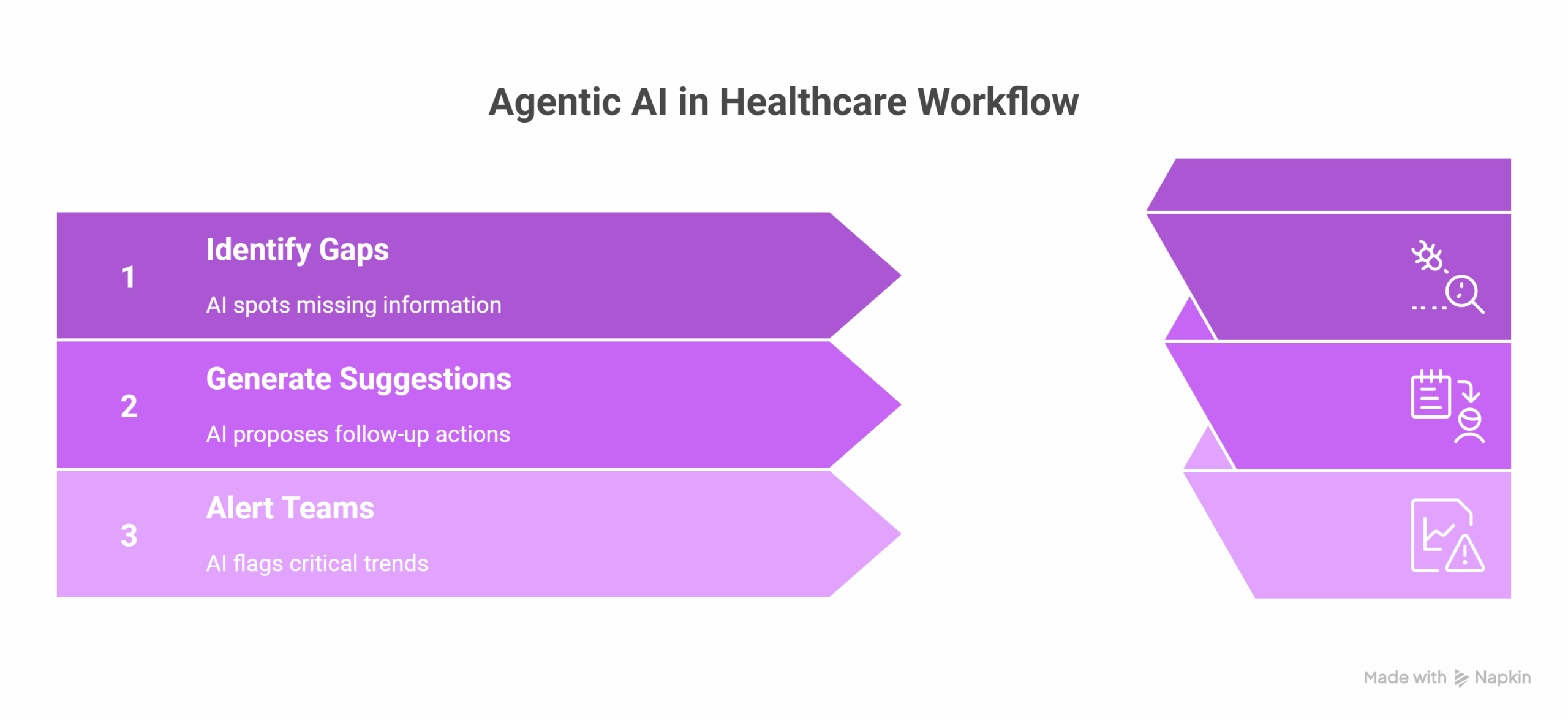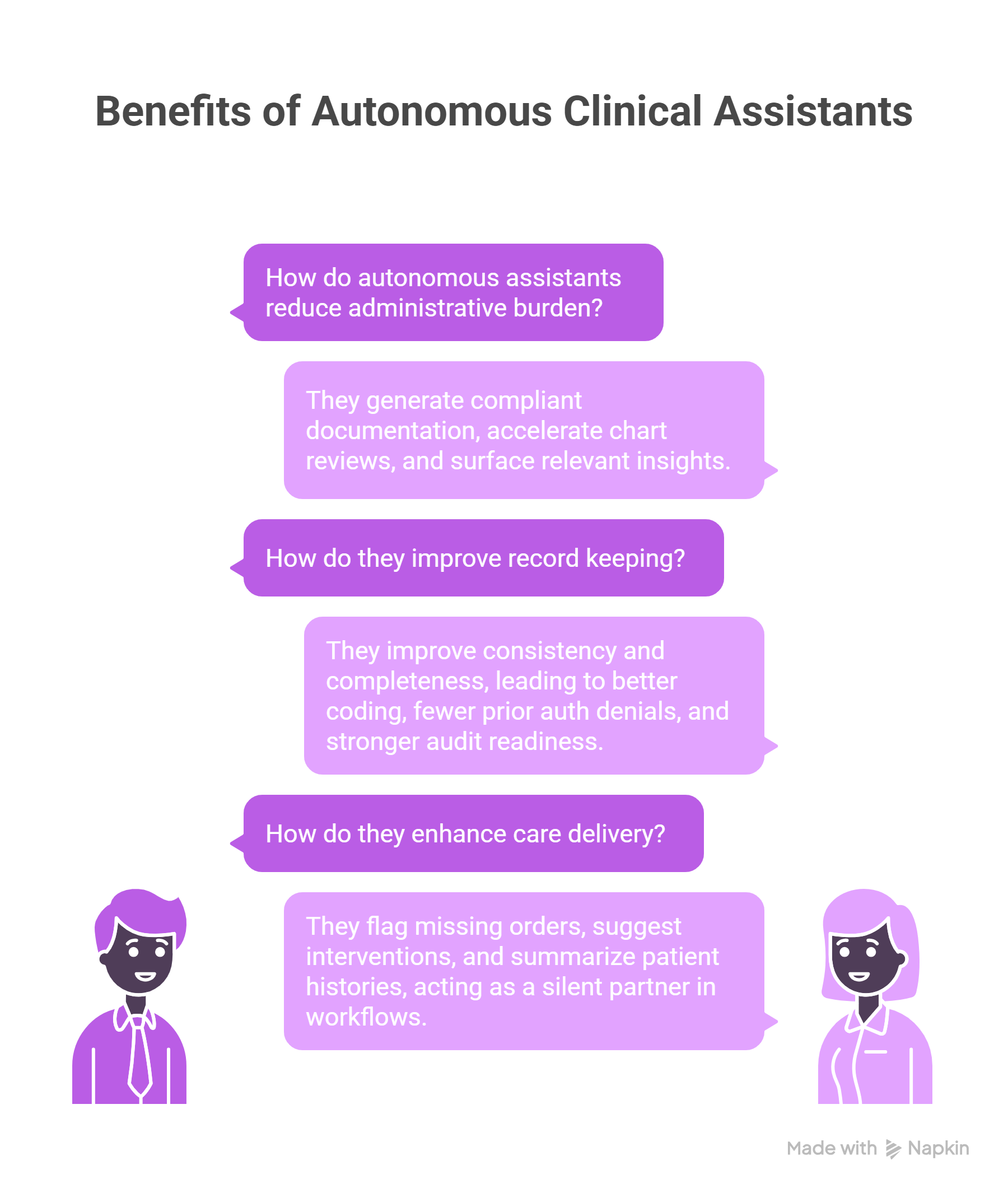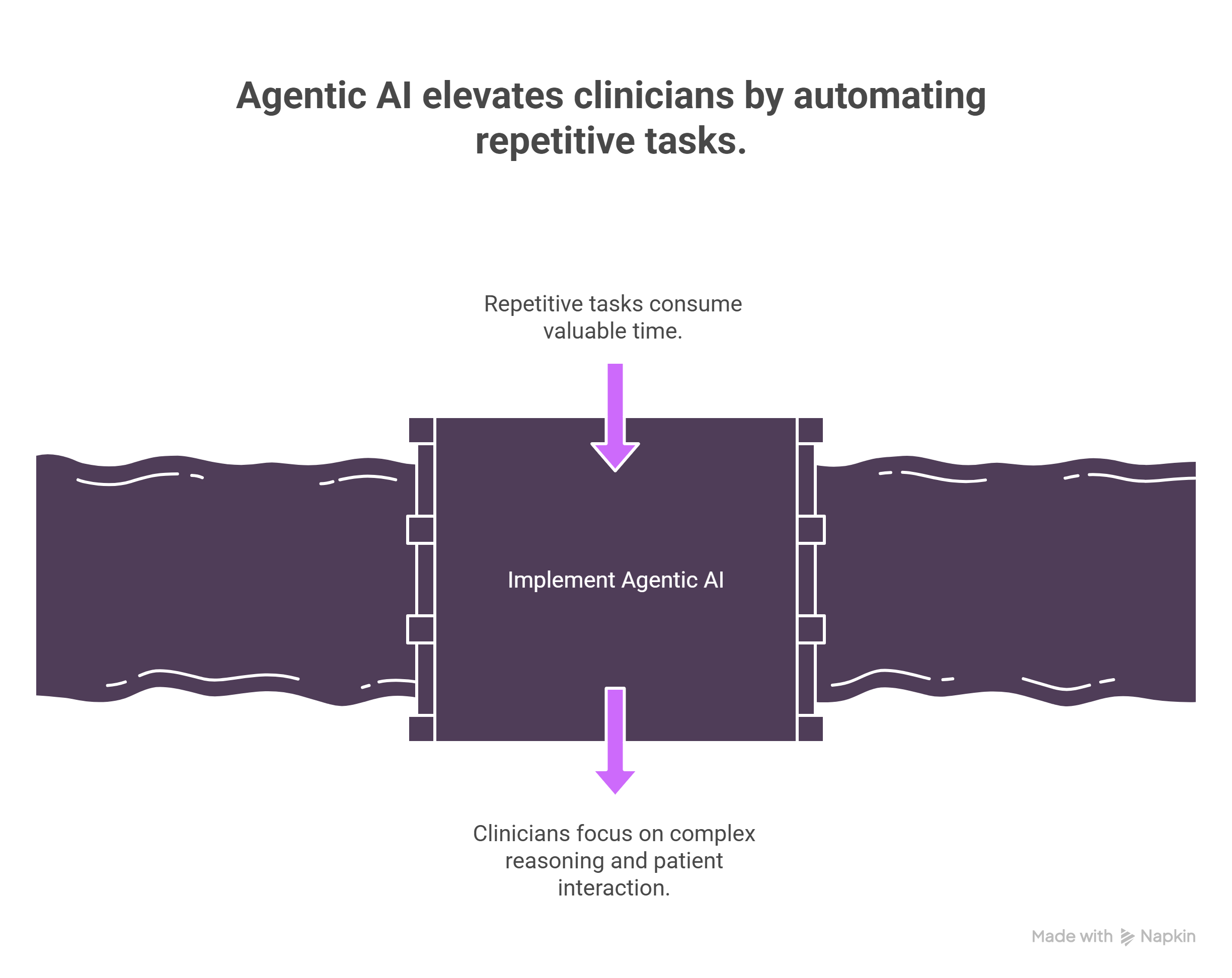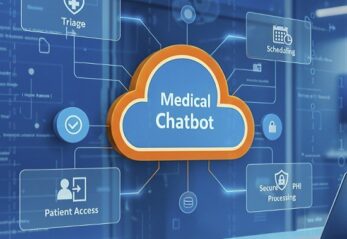What is Agentic AI, and how does it differ from traditional automation?
Agentic AI in Healthcare: The Rise of Autonomous Clinical Assistants
Agentic AI refers to intelligent systems capable of independently planning, initiating, and executing multi-step tasks in dynamic environments, without constant human instruction. Unlike task-specific AI that responds to pre-programmed commands, agentic AI can reason, adapt, and collaborate in real time.
In healthcare, this technology unlocks new possibilities. Instead of responding reactively, AI can now proactively support clinical teams, handling tasks that require foresight, judgment, and contextual understanding. This means going beyond simple chatbots or rule-based scripts to build agents that act with autonomy.
Why is agentic AI a natural evolution for clinical NLP?
Healthcare is filled with high-stakes, complex tasks that demand more than just information retrieval. Consider processes like reconciling medication lists across multiple encounters, generating personalized discharge summaries that comply with payer guidelines, or tracking abnormal vitals over time to flag deterioration risks. These aren’t tasks you can fully automate with rules, they require initiative and some level of clinical reasoning.
Agentic AI addresses this need by integrating context-aware large language models (LLMs) with workflow logic and dynamic memory. Unlike traditional automation, it doesn’t wait for instructions. It can identify gaps in documentation, generate follow-up suggestions, or alert teams to critical trends across longitudinal patient records.
What does an autonomous clinical assistant look like in practice?
An autonomous assistant can monitor patient data continuously and act on clinical triggers without needing explicit prompts. For instance, it might detect missing risk-adjusting diagnoses for a Medicare Advantage patient and compile documentation to support coding accuracy. It can suggest next-best clinical actions based on established pathways and even draft prior authorization letters or appeal documents automatically.
In radiology, it could summarize findings across historical imaging and correlate with lab and pathology results. In primary care, it might track gaps in care, nudge documentation, and generate quality measure summaries in real time. These applications are no longer experimental, they’re being operationalized using platforms like John Snow Labs’ Generative AI Lab, Healthcare NLP, and Medical NLP Server.
How is John Snow Labs enabling agentic AI in healthcare?
John Snow Labs supports this shift through a stack purpose-built for regulated environments. The Generative AI Lab empowers healthcare organizations to build prompt-based workflows, customize LLMs, and design validation pipelines that support safe deployment of clinical agents.
Complementing this, the Healthcare NLP library offers pretrained models and pipelines that handle tasks like entity linking, summarization, clinical classification, and assertion detection, critical building blocks for autonomous and what is more important, auditable reasoning. Meanwhile, the Medical NLP Server brings real-time inference at scale, and the Medical Terminology Server ensures that all extracted and generated concepts are mapped to clinical standards like SNOMED CT and ICD-10, keeping outputs aligned with regulatory and semantic expectations.
What are the benefits of autonomous clinical assistants?
Autonomous assistants significantly reduce the administrative burden on clinicians and staff. They help generate compliant documentation, accelerate chart reviews, and surface relevant insights without being asked. These assistants improve the consistency and completeness of records, which translates into better coding, fewer prior auth denials, and stronger audit readiness.
They also enhance care delivery by acting as second sets of eyes, flagging missing orders, suggesting evidence-based interventions, or proactively summarizing patient histories. Rather than adding another screen or alert, agentic AI embeds into workflows as a silent partner.
What safeguards ensure trust and safety?
Every component of John Snow Labs’ agentic AI platform is designed with governance in mind. Clinical outputs are explainable, auditable, and version-controlled. Human-in-the-loop (HITL) workflows ensure that clinicians can review and approve AI suggestions before actions are finalized. Deployments are HIPAA and GDPR -compliant, with options for private cloud or fully on-premise implementations.
This design empowers organizations to scale autonomy responsibly, retaining oversight while benefiting from efficiency.
How will agentic AI change the clinician’s role?
Rather than replacing clinicians, autonomous assistants are designed to help them. By offloading repetitive tasks like summarization, coding, or guideline checks, they restore time for patient care and clinical reasoning. Clinicians can interact with AI like they would with a skilled scribe or assistant, reviewing, validating, and approving complex outputs instead of starting from scratch.
Over time, this creates a feedback loop. Clinicians build trust in the system, and the system improves based on clinician input. Agentic AI thus becomes not only a productivity tool but a dynamic partner in delivering safer, more personalized care.
FAQs
What’s the difference between agentic AI and generative AI?
Generative AI focuses on creating content (e.g., text summaries or reports). Agentic AI builds on this by giving systems the ability to plan, decide, and act on their own, using generative capabilities as one part of a broader decision-making process.
Are these assistants fully autonomous now?
Most systems are in a phase of supervised autonomy. They operate independently but require clinician approval for final actions, especially in high-risk or regulated workflows.
How is safety ensured in agentic deployments?
All outputs are traceable and reviewed through human-in-the-loop workflows. John Snow Labs also enforces strict compliance through on-premise deployment, role-based access control, and full audit trails.
Can agentic AI integrate with existing EHRs and data platforms?
Yes. Through RESTful APIs and FHIR-compatible endpoints, John Snow Labs’ solutions fit into common EHR and data warehouse environments with minimal disruption.
Do I need a machine learning team to build these agents?
No. With tools like the Generative AI Lab, clinical and informatics teams can design agents using prompt engineering, prebuilt workflows, and intuitive validation tools, no advanced ML expertise required.
